In electrical infrastructure, two terms come up time and again, HV (High Voltage), and LV (Low Voltage). Whether you’re managing a commercial facility, developing a site, or simply trying to understand your power requirements, it’s essential to know what these terms mean and how they impact your systems.
What is HV?
HV, or High Voltage, refers to electrical power that is transmitted at high levels of voltage, typically above 1,000 volts (1kV) for alternating current (AC) and 1,500 volts for direct current (DC).
What is classed as high voltage?
While definitions can vary slightly by region or standard, in the UK, anything above 1kV AC is typically considered high voltage. High voltage is essential for efficient long-distance power transmission, reducing energy loss and installation cost, and maintaining supply reliability across large networks.
High voltage is commonly used in:
- Power transmission grids
- Distribution systems
- Industrial facilities
- Data centres
- Rail and transportation systems
What Does LV Stand For?
LV stands for Low Voltage, typically referring to voltages below 1,000V. In residential and commercial buildings, LV is the standard for most day-to-day electrical needs, powering lighting, plug sockets, appliances, and HVAC systems.
LV systems are easier to install, maintain and work with. However, when poorly designed or maintained, even low-voltage systems can pose significant risks, including overloads, inefficiency, and downtime.
The Difference Between LV and HV
The main distinction between LV and HV is the voltage level and the type of application. HV is designed for the transmission and distribution of power, often across long distances or for heavy-duty applications, whereas LV is used for consumption, the final stage where electricity is used.
| Feature | Low Voltage (LV) | High Voltage (HV) |
| Voltage Range | < 1,000V AC | > 1,000V AC |
| Typical Applications | Homes, offices, retail | Power networks, industry |
| Safety Considerations | Generally safer to manage – contact is typically required for electric shock to occur | Requires specialist knowledge – you can receive a fatal shock or burns without touching conductors due to arcing and flashover |
| Equipment Required | Consumer units, LV panels | HV switchgear, transformers |
What About MV?
In recent years, the term MV (Medium Voltage) has also started to appear more frequently, particularly in the UK. This classification has largely come from switchgear manufacturers, and while it’s not always formally defined, MV is often considered to cover the voltage range between 1kV and 33kV.
Medium voltage typically overlaps both the lower end of HV. It’s commonly used for distributing electricity from substations to industrial sites or large facilities before it’s stepped down to low voltage for final use.
Why Understanding HV and LV Matters
Whether you’re commissioning a new installation or upgrading infrastructure, knowing the difference between HV and LV allows for:
Better system design
Knowing whether a project requires HV or LV infrastructure helps engineers and planners create systems that are fit for purpose. High voltage systems are ideal for transmitting electricity over long distances or powering energy-intensive operations, but they demand specialised equipment and installation.
In contrast, low voltage is better suited for internal building distribution, appliances, lighting, and general use. Making the right choice ensures your system is efficient, scalable, and future-proof.
Improved safety
Mismatched or poorly designed voltage systems can pose serious safety risks, from equipment failures to fire hazards or electrical shocks.
HV systems require trained professionals and strict safety protocols due to the elevated risk. Understanding what’s classed as high voltage and how it should be handled reduces the risk of accidents, protects staff, and ensures the system remains compliant with UK regulations and safety standards.
Cost-effective maintenance
Accurate identification of your system’s voltage type helps streamline preventative maintenance schedules and reduces downtime. HV systems may require more specialised inspections and testing (such as partial discharge testing or insulation resistance checks), whereas LV systems are typically simpler to maintain. By aligning your strategy with the correct voltage classification, you avoid unnecessary costs and minimise the risk of unexpected failures.
Regulatory compliance
HV and LV systems are governed by different regulations, including the IET Wiring Regulations (BS 7671), the Electricity at Work Regulations, and guidance from the Health and Safety Executive (HSE).
Understanding whether your setup qualifies as LV or HV means that your systems are installed, maintained, and operated within legal frameworks to avoid fines, penalties, or operational shutdowns.
A facilities manager should know if HV or LV supplies their site because it directly affects:
- Legal responsibility & safety compliance: If the site has its own HV supply and equipment (e.g. transformers, switchgear), the business becomes the “Duty Holder” under the Electricity at Work Regulations and must make sure that HV-specific inspections, maintenance, and authorised personnel are in place.
- Operational risk & downtime: HV faults require specialist engineers, often with longer repair times and higher costs than LV faults.
- Cost & contracts: HV sites typically own and maintain their own infrastructure beyond the point of supply, which can mean extra service contracts and insurance.
- Emergency response: HV incidents require different isolation and clearance procedures compared to LV, and emergency services may need to be informed differently.
Talk to the Experts
Whether you’re dealing with low-voltage upgrades or planning a high-voltage installation, Prestige Power has the expertise to deliver reliable, compliant, and cost-effective solutions.
Our engineers work nationwide, supporting everything from small commercial setups to large-scale industrial infrastructure.
Get in touch today to discuss your requirements and discover how we can support your power systems, safely and efficiently.


